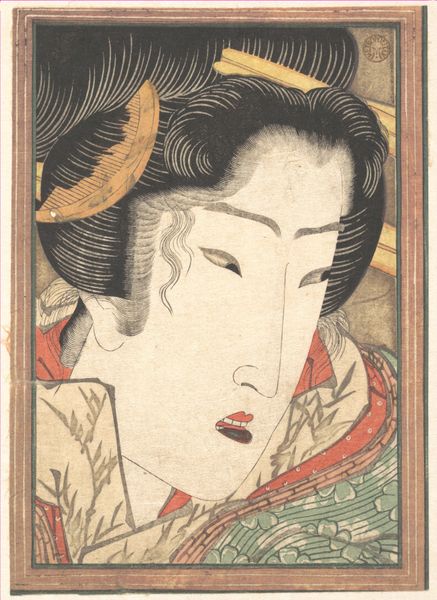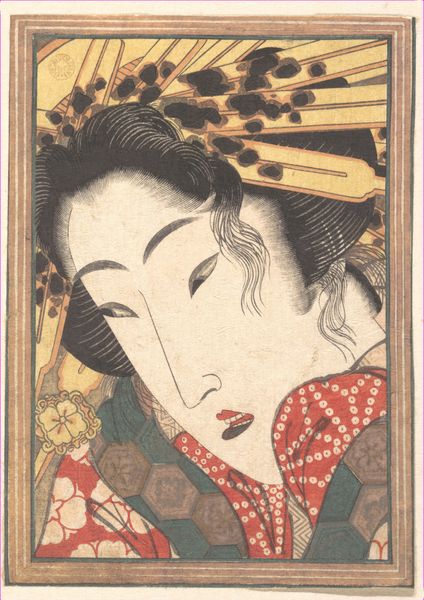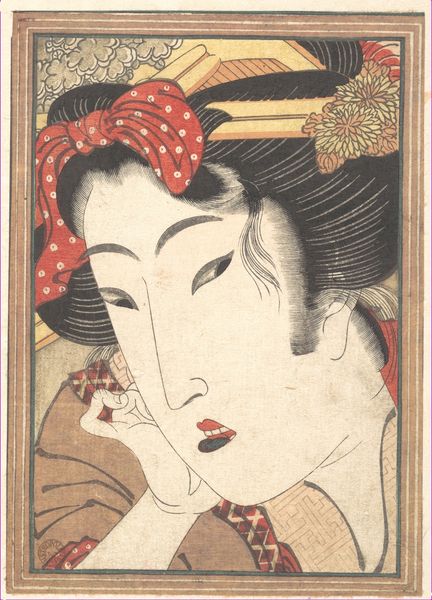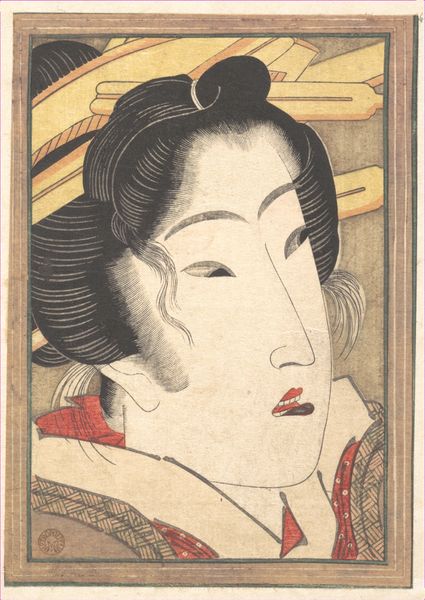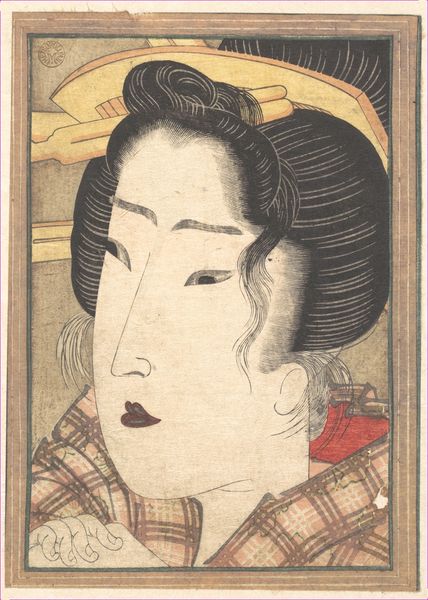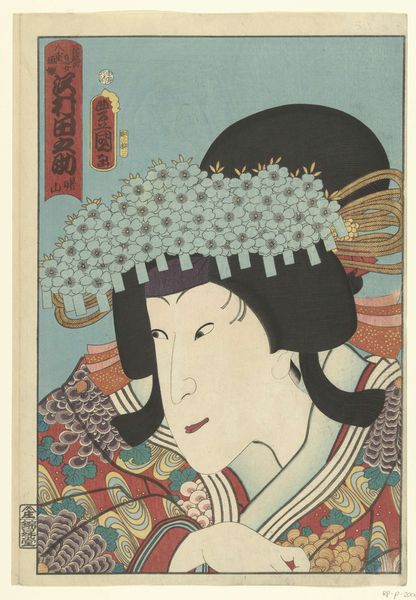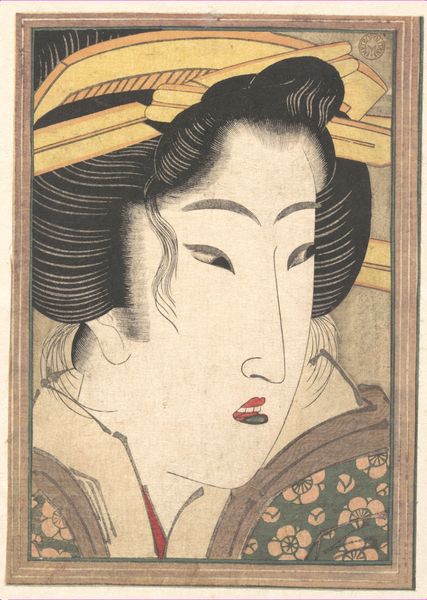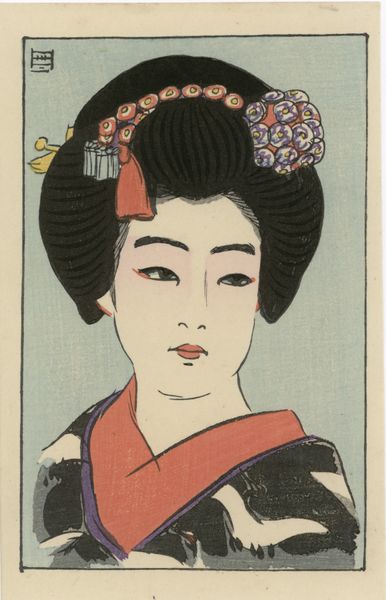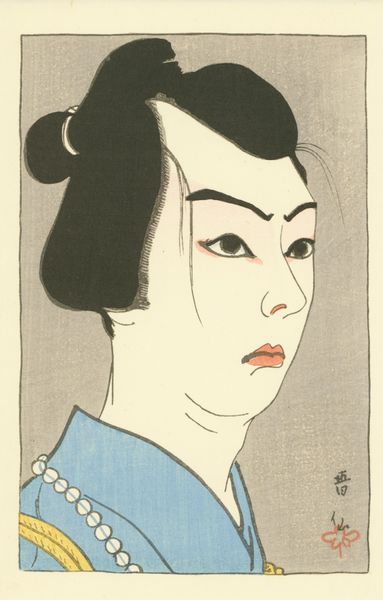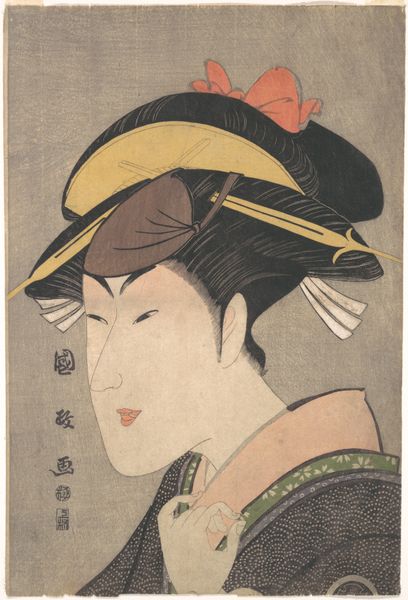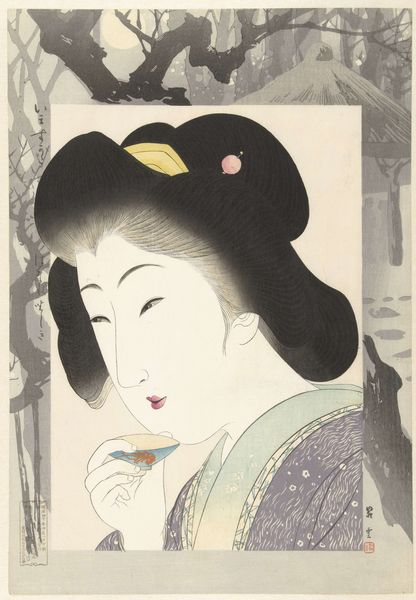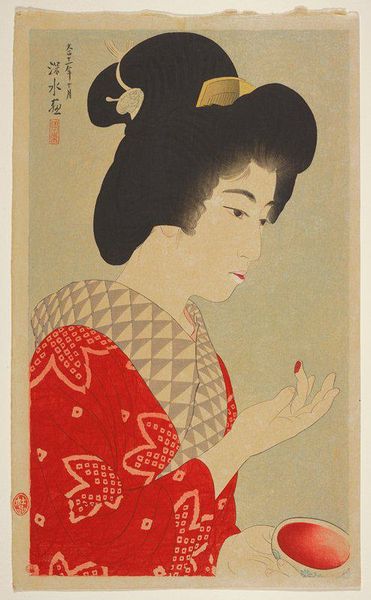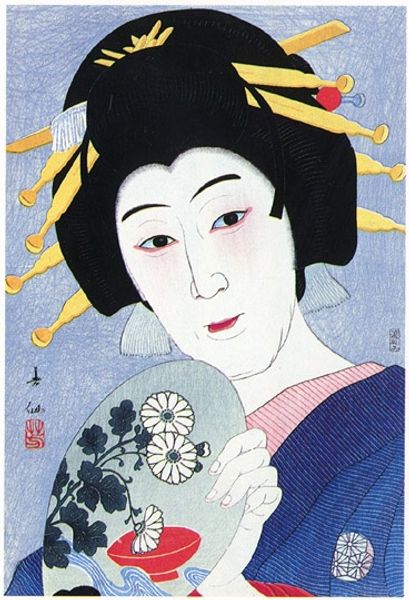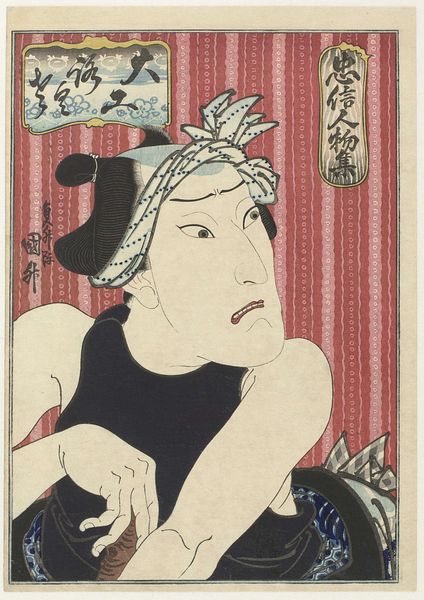
Rejected Geisha from Passions Cooled by Springtime Snow 1824
0:00
0:00
print, woodblock-print, woodcut
#
portrait
# print
#
asian-art
#
caricature
#
ukiyo-e
#
woodblock-print
#
woodcut
Dimensions: H. 7 in. (17.8 cm); W. 5 in. (12.7 cm)
Copyright: Public Domain
Editor: This is Keisai Eisen’s “Rejected Geisha from Passions Cooled by Springtime Snow,” a woodblock print from 1824. I'm struck by her downcast gaze. What structural elements create such a mood? Curator: Observe how the artist uses line and form. The figure's bowed head and the downward slope of her eyes create a strong diagonal thrust that leads our eye downward, reinforcing the feeling of dejection suggested in the title. Note, too, the restrained palette. Do you see how the muted colors contribute to the somber tone? Editor: Yes, I see that now. The red and gold accents in her hair ornaments and kimono don’t pop as much as I would expect; they're quite subdued. What is the impact of this color restriction on the form? Curator: Exactly. Eisen uses a limited color range, allowing the formal elements to be dominant. By muting the colours and giving the linear construction prominence he has distilled it. How might this reduction intensify the sense of withdrawal that you identified earlier? Editor: By removing distractions from what’s physically there: her form. If bright colours represented active engagement or joy, then muting these colours highlights her state of withdrawal by contrasting to our expectations. Curator: A very astute observation. And further, consider the varying thickness of line throughout. Editor: How does that fit into this discussion of the piece’s formality? Curator: Thick and thin lines can generate a contrast in depth, but most noticeable in terms of rhythm. We interpret those differences between light and shadow, further contributing to the downcast state suggested here. Eisen carefully orchestrated his tools for his intention. Editor: I understand. So by paying close attention to formal elements such as line, color, and composition, we reveal emotional qualities that define Eisen's aesthetic success in “Rejected Geisha.” Curator: Precisely. Formal analysis enables us to see the artistry, and it all serves the core structural qualities that evoke profound expression.
Comments
No comments
Be the first to comment and join the conversation on the ultimate creative platform.
